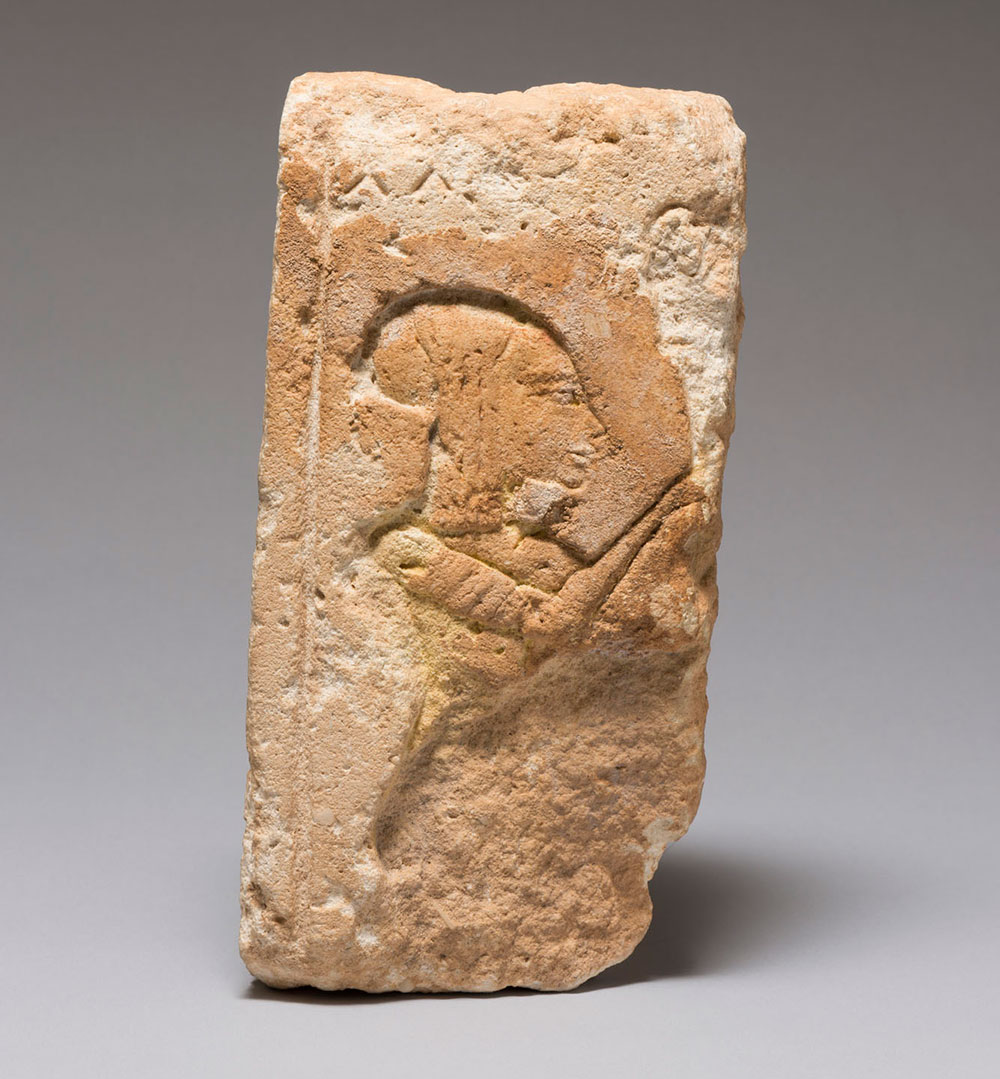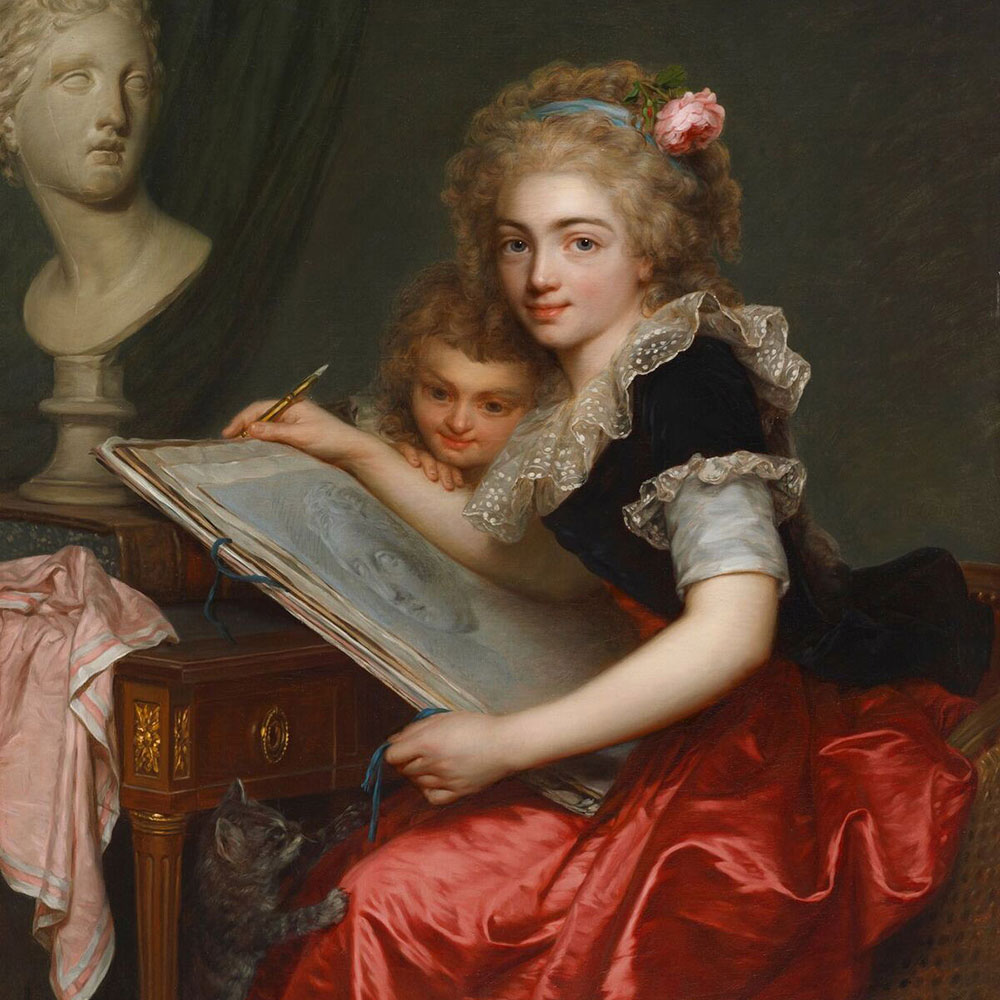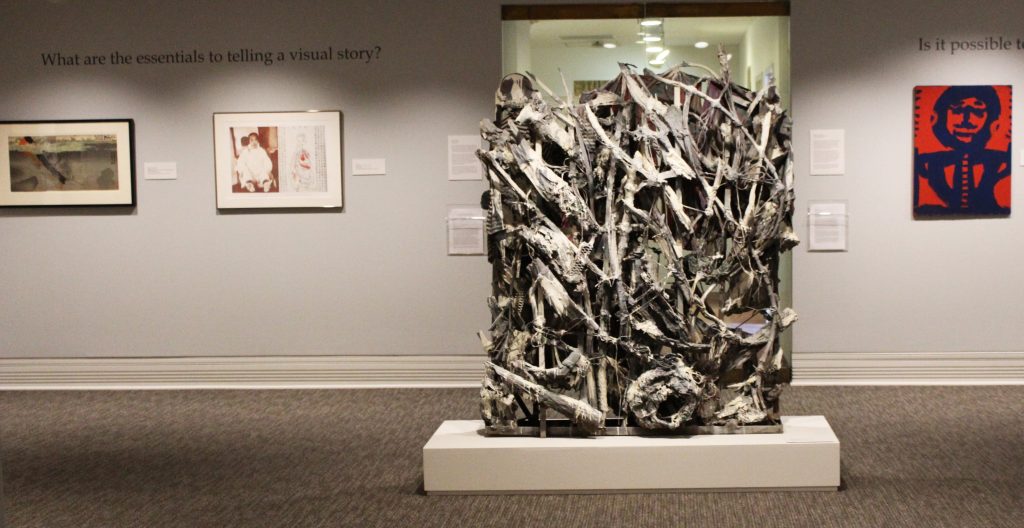
By Paige Nehls
When I accidentally came across the Facebook post calling for student guide applications, I was thrilled. I love museums, but I particularly love the Ackland Art Museum. As an Art History major, it has become like a second home to me.
The Ackland is a haven for the intellectually curious and the aesthetically hungry. It’s always free and always welcoming.
I based my entire tour on Princess with a Musical Instrument in the Ancient Gallery, from the New Kingdom period of Egypt. Encapsulating so much of what drew me to art history in the first place, it is the love of my art life.
For one, it is amazing to me every day that here in Chapel Hill we have a relief sculpture that was carved in a workshop for an Egyptian pharaoh millennia before they knew this continent existed. It is incredible that I get to see it and study it, so far from its home, so long after it was created. I want to share that awe with my community! I think that everyone should be able to connect with art the way that my fellow student guides and I have been able to do.
When I speak like that about art, I usually get the “Yes, because you’re an art history major” eye roll, and yes, I am. However, the appreciation of and connection to art transcends academic categories. One of the most rewarding aspects of being a student guide has been connecting with other students of other ages, majors, and backgrounds. It’s given me an enlightening perspective on art and how it resonates with different people.
Some of the best advice I got while working on my tour came from my colleague and friend, Christina Barta, who is a first-year Computer Science major. For a while, I was stuck on how to present the objects in my tour. One day, Christina just looked up at me and said, “Change the order.” That seems so simple, and comical in retrospect, but I was so involved in my own tour I couldn’t see the forest for the trees
Growing up in ballet, I was trained to look for lines, for beauty, and for aesthetically pleasing forms. The lines that the artists use to create shapes in their works are very telling of the culture that produced both the artist and the work. When I was creating my tour, I viewed each object as a snapshot of the past. We can take one object and figure out what was going on at the time, why, who produced it, what they valued, and the list goes on and on.
The tours that my fellow student guides and I have created are fun, interesting, and rewarding. It is rare to watch people absolutely fall in love with what they are doing, but you see it at the Ackland every day. These tours are a learning process for everyone involved, including the guides, and that is what makes it such a remarkable experience.
Paige is a junior at UNC-Chapel Hill seeking a degree in Art History. Her interests include, “Egypt. Just Egypt. Only Ever Egypt.”
Unidentified artist, Egyptian, Relief of a Princess with a Musical Instruments (Sistrum), c. 1360-1350 BCE, white sandstone, 6 1/4 x 4 1/2 x 1 1/4 in. (15.9 x 11.4 x 3.2 cm). Ackland Art Museum, University of North Carolina at Chapel Hill, Ackland Fund. 67.29.4.


